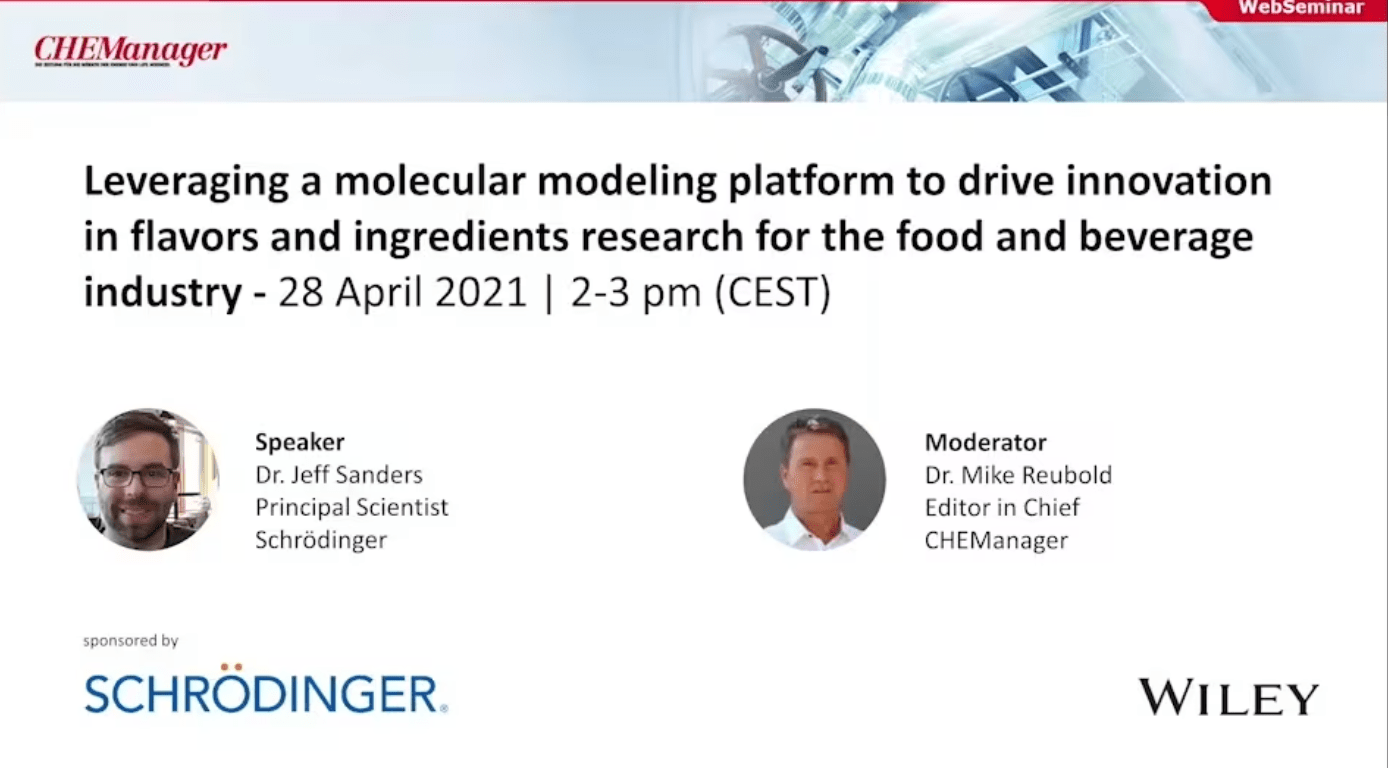
Leveraging a molecular modeling platform to drive innovation in flavors and ingredients research for the food and beverage industry
Speaker
Jeffrey Sanders
Product Manager of Consumer Packaged Goods
Abstract
As trends in the food and beverage industry continue to change, the demand for new and innovative products is increasing. More and more, customers are becoming more discerning, choosing foods based on understanding ingredients, where their food comes from and what is the best choice for healthy living. These concerns highlight some of the weak points in food research and development: stagnation and “renovation over innovation”.
To meet these challenges and retain their position in the consumer marketplace, new food and drink formulations need to be developed. Understanding how ingredients behave in products will be necessary to drive not only new development but also end to end product tracing. To streamline this process, multi-scale physics simulations can be utilized to cut down product development costs and optimize large scale production. Molecular simulation provides a unique opportunity to predict how individual ingredients will behave in formulations. Atomistic simulations can help researchers and engineers understand product morphology, solubility and other physical properties if the components are known. Unlike process simulations, only the chemistry and composition is required to build molecular models of up to millions of atoms and predict properties. Beyond physics-based modeling, chemical information can be used to build machine learned models with existing experimental or sensory data. In this talk, we will explore the state of the art in molecular modeling of flavors and ingredients.